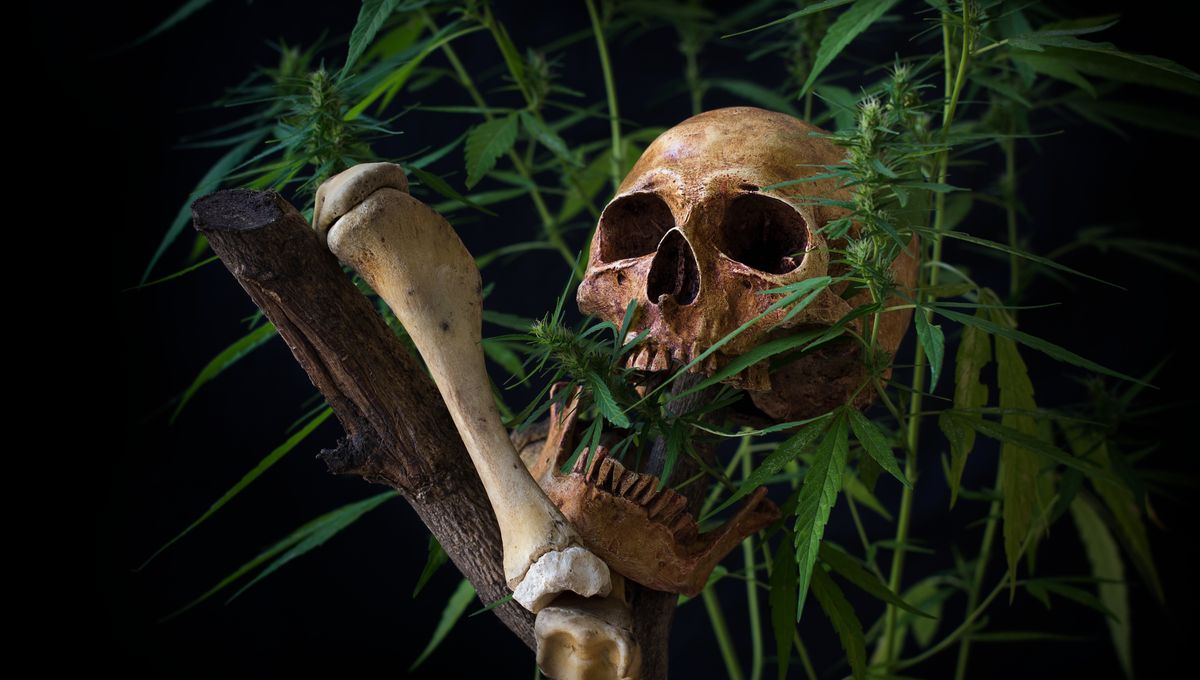
Researchers have discovered the first archaeological evidence that cannabis’s psychoactive compounds can stay in our bones long after we have died. This evidence comes from the skeletal remains of people the 17th century.
The authors of a new study were originally looking for signs of the administration of medicinal and “recreative plants” in the population of 17th century Milano, Italy. They focused their attention on remains located in the Ca’ Granda crypt of the Ospedale Maggiore, one of the most innovative hospitals in Europe at the time.
Between 1638 and 1697, patients who died at the hospital were interred in this crypt. They remained sealed and preserved there until the crypt was excavated again, which made them perfect for this analysis. In fact, a previous study conducted by the team recovered evidence of opium in cranial bone samples and well-preserved brain tissue recovered from some of the crypt’s residence.
It was this evidence that inspired this latest study.
“Therefore, we decided to extend the research to long bones with a pilot study on femora”, the authors wrote. “Femoral bone samples were thus collected from the human remains of the crypt with the aim to search, through archeotoxicological investigations, the presence of substances that could be associated to the administration or intake of medical or recreative plants within the population.”
This time, Gaia Giordano at the University of Milan, the first author of the study, and colleagues extracted bone samples from the remains of nine people buried at Ca’ Granda. They then conducted toxicological analysis by powdering the bone and then preparing the samples so individual chemicals compounds could be separated and purified. These traces could then be identified using mass spectrometry.
The analysis revealed molecules of tetrahydrocannabinol (THC) and cannabidiol (CBD) – the psychoactive compounds of cannabis. These molecules were found in the thigh bones of a man and woman, and likely became trapped in the bone after they were consumed and absorbed into the bloodstream and then blood vessels in their bone tissue.
“The results obtained on bone samples showed the presence of two molecules, [THC] and CBD, highlighting the administration of cannabis”, the team explained. “These results, to the best of our knowledge, constitute the first report on the detection of cannabis in historical and archaeological human osteological remains.”
Interestingly, although cannabis was a common feature of medical remedies among the Ancient Greeks and the Romans, the plant was not popular in western Europe during the Middle Ages, especially from the 12th century onwards. In fact, it was explicitly banned by a Papal edict in 1484.
In addition, there is no mention of the plant in the hospital’s detailed pharmacopeia, suggesting that it was not being administered officially by those working there. This, Giordano and colleagues believe, could mean the patients were either self-medicating or perhaps using it for recreational purposes.
The study is significant as it is the first use of this toxicological method to analyse human remains at an archaeological site. Moreover, according to the existing literature, cannabis has never been detected in ancient bones before.
The team conclude that: “The analytical data obtained shed a new light on the habits of the population under investigation, demonstrating an exposure to the plant in the city of Milano during the Modern era, probably for recreational purposes given written sources, although self-medication, occupational or accidental exposure, or administration by healers not practicing in Ca’ Granda are alternative possibilities that cannot be excluded.”
The study was published in the Journal of Archaeological Science.
Source Link: How Long Does Cannabis Stay In Your System? Over 300 Years, Apparently